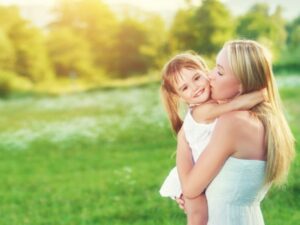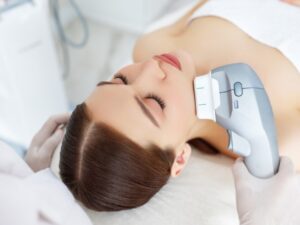Congratulations! You are pregnant! You look forward to it with a lot of excitement, coupled with a good dose of trepidation. Your body will now go through a sea-tide of physical, physiological and hormonal changes. And since your skin is the largest and most ‘visible’ organ of your body, it’s fair to say that the changes in your skin and hair are likely to be amongst your most unnerving concerns. Some changes, like your new pregnancy glow and your thick luscious hair, are wonderful. Some other skin changes might not be so pleasant. So it is important to keep in mind that all of these changes are the ‘trophies’ of your pregnancy, and almost all the unpleasant skin developments will disappear on it’s own in a few months after the delivery.
Why does my skin glow?
Your body produces larger amount of blood during your pregnancy and your heart works overtime to pump this blood through your body. This is to ensure enough blood and nutrition to the growing life inside you. But this increased circulation also makes your skin rosy and flushed. You will also experience increased sweating and oil production on your facial skin, which gives your skin a bright sheen. Contrary to old grandma tales, this glow has nothing to do with the gender of your unborn child!
Why is my skin turning dark?
The dark areas of your skin, like the skin on your upper lip, your nipples, inner thighs and your genital skin, will turn darker. This is more noticeable in dark skinned women. Pre-existing moles and freckles also become darker and more prominent. Even old scars and birthmarks may look darker. Many women notice a dark line running down from their navel to their pubis. This line is called the Linea Nigra. Most women already have a very faint white line in that area (they may not even be aware of it), and that line turns brown and prominent during pregnancy. The most distressing problem is the appearance of brown blotchy patches on your cheeks or nose during your second and third trimester. This condition is called ‘Chloasma’ or the ‘mask of pregnancy’ as it creates the appearance of a half mask across the upper half of your face. All these pigmentations are caused by the hormonal upheavals in your body during your pregnant state. Chloasma can create a lot of social embarrassment and many crying spells, but the good news is that it will disappear on it’s own. Use a sunscreen and avoid going out in the sun without protection, as this will darken your freckles and chloasma. Do NOT use any skin lightening or bleaching creams during your pregnancy, as their side-effects on the growing foetus are unknown and sinister. Post-delivery, avoid going back on hormonal contraception (like birth control pills) as they can worsen your pigmentation. If the skin all over your body turns a shade darker without any reasonable explanation, then it might be wise to have your thyroid gland tested.
I’m breaking out like a teenager!
If you already suffer from acne, your skin might turn oily and you might notice more severe pimple breakouts during the second and third trimester of your pregnancy. Unfortunately, most anti-acne creams and tablets are forbidden for pregnant and nursing women. Retinoid containing anti-acne creams can even cause serious birth defects in the fetus. For the particularly severe cases, where there is a risk of facial scarring from the acne, it is relatively safe to use Clindamycin and Benzoyl Peroxide gels after the 4th month of your pregnancy. Use a tea-tree oil face wash (avoid salicylic acid based cleansers), keep your face clean and dry, keep your nails off your face, and stay away from home-remedies like garlic juice or toothpaste as these could burn your skin! Your skin becomes more sensitive and irritable during pregnancy so avoid bleaches and abrasive face scrubs. You could use face packs made from Fuller’s earth or sandalwood powder. These keep your skin oil-free and unplug whiteheads. Your dermatologist can only hold your hand and talk you through this awkward phase, and your acne is likely to improve a few months after delivery, with no treatment at all.
My hair and my nails are behaving differently
Have you noticed that your hair is thicker and more luscious and seems to be growing faster? Your scalp hair grows in two cycles- the growing phase and the resting phase. During pregnancy, your hair gets arrested in the ‘growing phase’ and continues to grow long without shedding. However, after delivery, there is a sudden dip in your hormone levels. This, coupled with the stress and blood loss of the delivery, pushes your scalp hair into the resting phase, from where your hair starts to shed in large volumes. This is very upsetting for the new mother, who might notice hair all over her sheets in the morning, and the hair fall may be severe enough to plug your bathroom sink. But contrary to your fears, you are NOT going to go bald! The excess hair shedding will normalize in 6 months to a year, though in some women, their hair may never again be as thick as their pre-baby days.
Women who suffer from hormonal disorders like cysts in the ovaries or prolactinemia, may notice excess hair growth on their face and limbs during pregnancy. Though most of the finer hair will shed off post-delivery, some thick, coarse hair may persist. You can thread or wax during your pregnancy, though keep in mind that your skin is now more sensitive, so you may need to ice your skin and use sunscreens post-epilation. If you still have unwanted hair after the delivery, then you can undergo laser hair reduction treatments once you have stopped nursing.
Nails grow faster during pregnancy but may also be brittle and thinner.
I’m mortally afraid of ugly stretch marks. Please help!
This is the most frequent query I get from pregnant women. Stretch marks appear on your skin due to the excessive stretching and tearing of the skin as your belly grows. The hormonal changes in your body also make your skin more vulnerable to these marks. Stretch marks usually appear on the lower belly but can also appear on the breasts, buttocks, inner thighs and arms. They begin to appear from the 7th to 9th month of pregnancy, and in some women, they only appear immediately after the delivery. Initially, they are unattractive reddish-purplish itchy streaks across the skin. Post-delivery, they turn thick and white. Over a period of years, they will fade and shrink to form thin pale lines, but they never completely go away.
Stretch marks are hard to avoid. A lucky 10% of all pregnant women may never get stretch marks, especially if their mothers never had them. You can minimize stretch marks by following controlled weight gain during your pregnancy, moderate exercising, drinking plenty of water, and adequately moisturizing your skin. Anecdotal experience suggests that gently massaging your skin with heavy moisturizers has been very helpful at keeping stretch marks away. I suggest you take a clean dry bowl, add a good dollop of cocoa butter, some shea butter, the paste of avocado, a little lemon juice and sea salt, break open a few capsules of Evion (Vitamin E) and squeeze out the gel into this mixture. Mix well, and apply this to your skin 2-3 times a day. Rub your body with baby oil before you shower, and rinse off with Sebamed shower oil or Neutrogena sesame oil after your bath. 6 weeks after your delivery, begin an exercise regime again, initially with some mild cardio, later followed by some abdominal toning exercises, to regain muscle tone and avoid the “mummy jelly belly”. Once your baby is completely weaned off breast-milk, you can opt for deep chemical peels to resurfacing lasers to get rid of unsightly stretch marks.
I feel flushed all the time and my skin is turning “veiny”
Like I’ve mentioned before, your blood circulation is on overdrive in your condition. This is why you may notice that your palms and soles are red and hot all the time. You may also notice thick bluish veins around your calves. These are known as varicose veins. They can also appear in the anal region, making you more prone to piles and hemorrhoids. Tiny red slightly pulsating dots may appear on your chest and arms, with tiny spider like legs radiating from it. These ‘spider veins’ are harmless and many of them will disappear after the delivery. Your feet may get swollen and your gums may also turn red, swollen, and sore. Do not stay standing or sitting for a long time. Keep yourself active and on the move. Sleep on your sides and keep your feet propped on a pillow when you sleep. You can tide through these changes by taking your Vitamin C pills regularly, using soft-bristled toothbrushes, cutting back on salty treats, using mild laxatives when you feel constipated, and wearing elastic stockings (to avoid varicose veins).
I feel itchy all over and it’s unbearable!
Itchiness is usually because of skin dryness and oversensitivity which is common in this state. If itching is severe and accompanied by red raised rashes on your belly, then this may be a sign of cholestasis (a condition where the bile outflow from your gall bladder is obstructed by the growing uterus). There can be symptoms like nausea, poor appetite, tiredness and jaundice. If your urine is dark and the whites of your eyes appear yellow, then report to your doctor immediately. She will run some blood tests and prescribe emollients, mild steroid creams and Avil tablets along with Actigall to control the itch and jaundice. The jaundice will disappear after the delivery and the itching and rashes also subside in 6-12 weeks. During pregnancy, your skin is also more prone to prickly heat and vaginal yeast infections, which also create itching and discomfort.
Are there pregnancy skin changes which are dangerous?
Inform your doctor if your feet stay swollen throughout the day, if you develop jaundice, if you suffer from unbearable and non-stop itching, or if you notice itchy hives, water-filled or pus filled blisters on your belly or skin folds.




